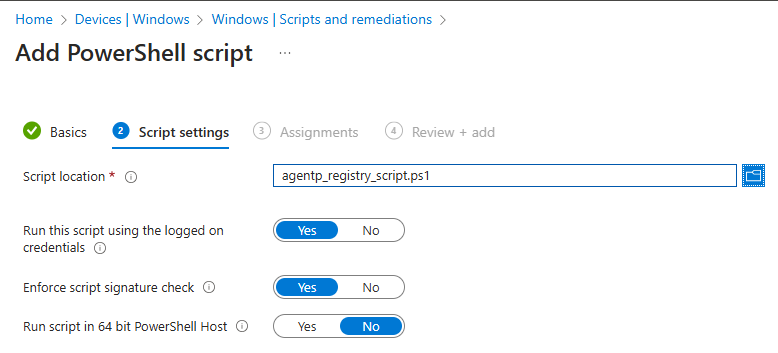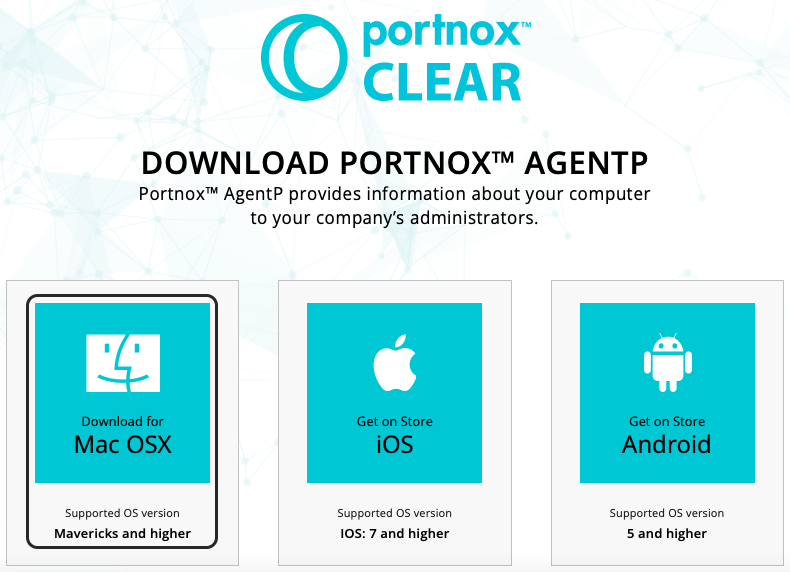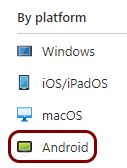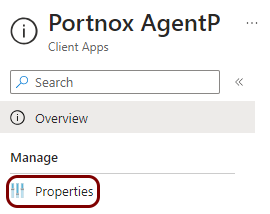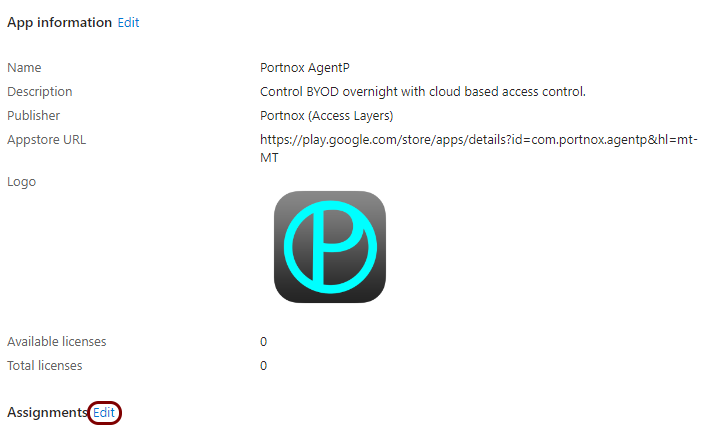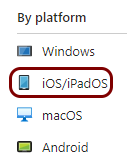Onboard devices with AgentP using Microsoft Intune
In this topic, you will learn how to deploy Portnox™ AgentP on managed devices by using Intune.
You can deploy AgentP on managed devices using Intune on all platforms supported by Intune: Windows, macOS, iOS/iPadOS, and Android. However, unattended/automatic enrollment is possible only in some cases:
If you use Windows with Entra ID or Active Directory, you can automatically enroll AgentP via Intune. This enrollment can use either the identity of the current user logged in to Entra ID or Active Directory on the Windows machine, or the identity of the machine itself. This works because, in these cases, AgentP already receives verified identity information from the operating system, so the user does not need to confirm their identity manually.
- In all other cases, such as on other platforms (macOS, iOS, Android) or when Entra ID or Active Directory is not used on Windows devices, you have two options:
- The user can manually onboard in AgentP. Then, AgentP will be able to fully manage the networks as well as provide risk assessment.
- You can use Intune to first distribute platform-specific SCEP+Wi-Fi/wired profiles to connect to the managed network, and then distribute AgentP. However, in this case, AgentP will not be managing the network connections, and can only be used for risk assessment purposes.
Deploy on Windows
In this section, you will learn how to configure Microsoft Intune to deploy Portnox™ AgentP on managed Windows devices.
Result: You created a Windows AgentP app profile in Intune and assigned it to devices.

Deploy on macOS
In this section, you will learn how to configure Microsoft Intune to deploy Portnox™ AgentP on managed macOS devices.
Result: You created a macOS AgentP app profile in Intune and assigned it to devices.

Deploy on Android
In this section, you will learn how to configure Microsoft Intune to deploy Portnox™ AgentP on managed Android devices.
Result: You created an Android AgentP app profile in Intune and assigned it to devices.

Deploy on iOS
In this section, you will learn how to configure Microsoft Intune to deploy Portnox™ AgentP on managed iOS devices.
Result: You created an iOS AgentP app profile in Intune and assigned it to devices.













